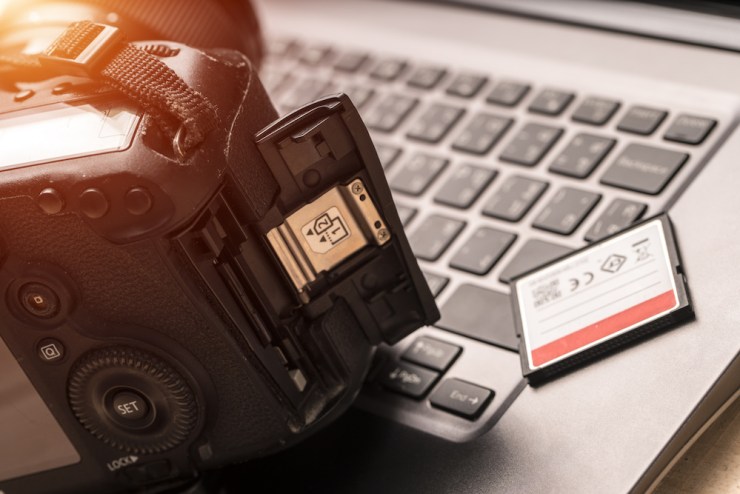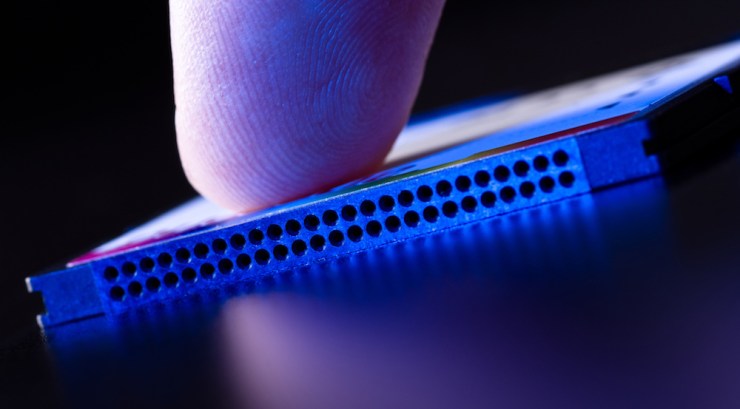Let’s talk memory cards. We have SD cards, CF cards, CFast cards and many options within those to choose from. We all have them, need them and use them. But what does it all mean? Let’s discuss taking care of our cards and preventing potential problems that can and will happen to all of us. Here are 10 practical tips.
1. Keep your camera up to date
It seems like firmware updates are happening more and more often. This can affect the way your camera talks to your memory card. Even memory cards nowadays can have firmware updates, such as some of the SanDisk SD cards.
Always make sure you have the latest firmware updates on both your camera and your memory card. As much as we all love more emails, those emails updates from the companies you use products for will help keep your investment protected.
2. Make sure you replace batteries before your camera dies
If your camera dies while writing a picture to your card, it can cause a few not-so-happy issues such as corruption and card errors. It’s the same thing if you disconnect your hard drive from your computer before ejecting. If your camera dies without properly shutting down, over time your card can possibly be compromised.
3. Don’t switch your camera off so fast
As with the same reasons above. If your camera is still writing to the card and you turn off your camera, the communication between your card and your camera can be compromised.

4. Always format your memory card in the camera you are using before you start taking photos
This allows optimal communication between your card and your camera. Formatting does more than just delete previous images and is essential to preventing issues of your camera writing to your card.
5. Marry the card
To really create a long term healthy card that will last years and in theory prevent less issues with corrupt files, assign a card to stay with a certain camera. The theory is that the file structure in cards and the way camera’s read cards can eventually become corrupt and start causing issues. Issues can come up such as not being able to read all the files or the time is takes to read such files.
I actually had those issues recently with a rented card. Which brings me back to keeping your cards healthy. If you can, keep one card with that same camera.
6. Don’t let your card fill up
Stop shooting when your card is close to being filled. If you fill your card, it can cause your camera to not fully write all the information about the file to the card. It can also cause card errors and corrupt files. Thankfully card prices have dropped.

7. Don’t delete images in camera
I have to admit I’m guilty of not following this advice. The thought behind this guideline is that deleting images from your card will actually shorten the life span. Erasing images after uploading means one erase cycle rather than several if you are deleting one by one from your camera. So either use your computer to erase everything or format the card before the next shoot. Don’t delete bad images until they are on your computer.
8. Make sure you have fast memory cards
Fast cards allow your camera to write to your card faster and allows for faster reading and uploading speeds to your computer. Luckily in the past few years, the price of memory cards has improved. Get the fastest and get multiple. Have backups and have enough memory. I shoot minimum on 32GB and mostly always use my 64GB card.
9. If your card or camera says there is an error, STOP TAKING PHOTOS
Stop anything you are doing with that card and take it out of your camera. You may have to use a recovery software to get your images but the less you mess with the card the more likely you are to save those images.
10. Recover your memory card if needed
Finally, if the unimaginable happens and you format your card before making sure your photos are backed up, what do you do? Luckily there are a few programs that will recover your images as long as you haven’t started shooting. Once you have started shooting, those new files are being written over the deleted files.
SanDisk has a recovery program that I’ve used on many occasions when I worked at a camera store. However, there are several different companies on the market that for a fee, you can download the software and recover images.
Tell your story with the second annual Visual Storytelling Conference!
Experience four days of interactive, online training sessions featuring a range of educational content with experienced photographers and content creators. This free event kicks off with a series of technical boot camps to build essential skills, followed by live, online sessions on photography, video, business and social media. Join live from March 10-13, 2022!
